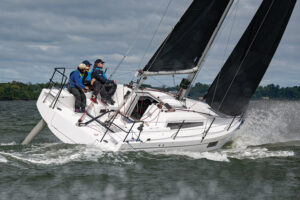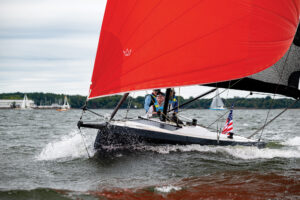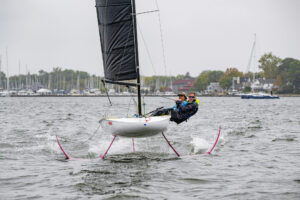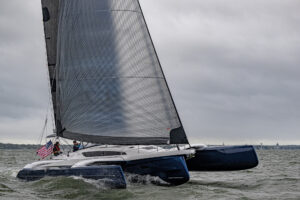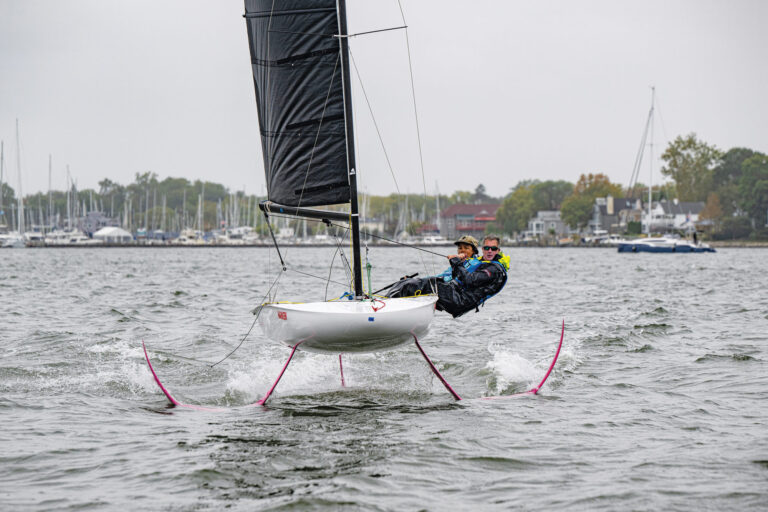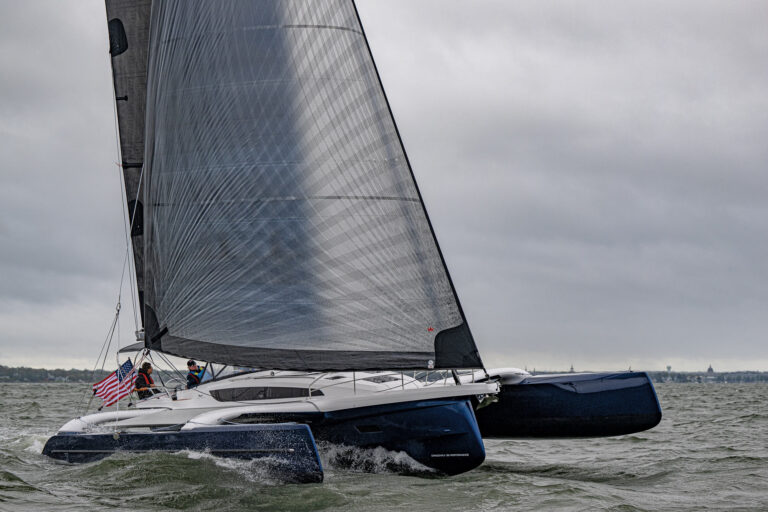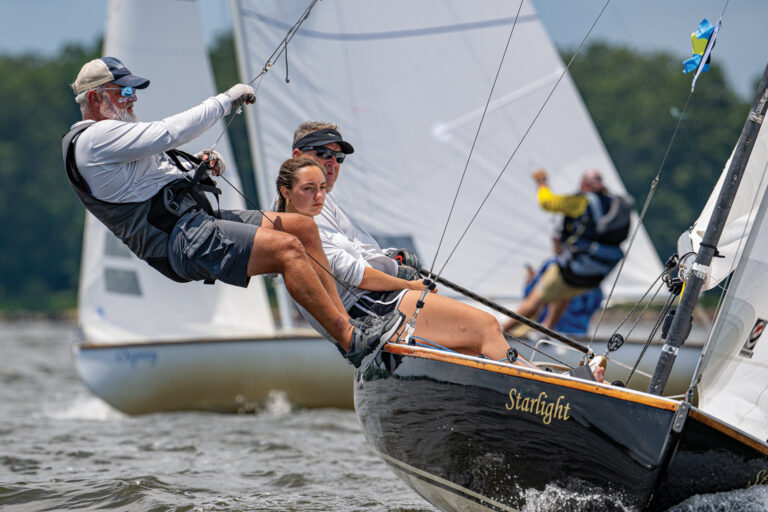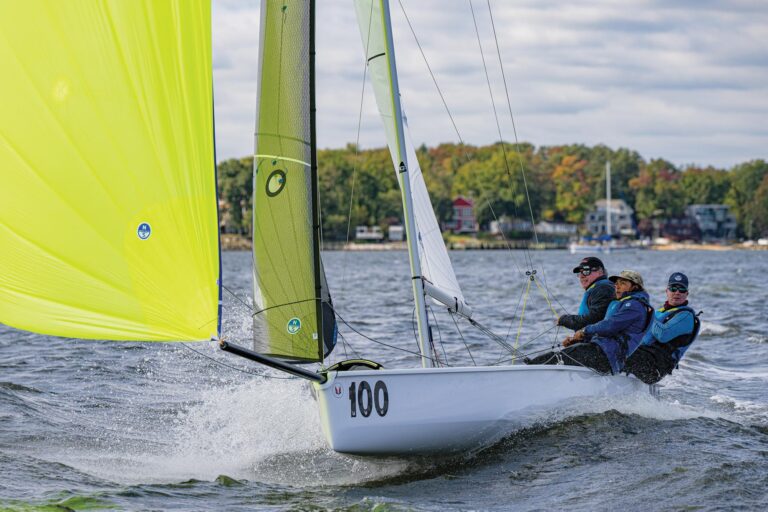Sailing World Magazine’s annual Boat of the Year tests are conducted in Annapolis, Maryland, following the US Sailboat Show. With independent judges exhaustively inspecting the boats on land and putting them through their paces on the water, this year’s fleet of new performance-sailing boats spanned from small dinghies to high-tech bluewater catamarans. Here’s the best of the best from our 2022 Boat of the Year nominees »
As interest in doublehanded offshore racing piqued with the expectations it would be an Olympic sailing discipline in 2024, so too did the development and production of several purpose-built 30-footers. Dehler Yachts, Germany’s big production boatbuilder, jumped into the action with its own 30-footer, and as we’d expect of a Judel/Vrolijk and Co.-designed race boat, this one is an all-business shorthanded racing machine jam-packed with cool features found on grand‑prix boats twice its size.
“You can tell they started with a blank slate because the boat is so well-integrated with the design and construction—from bow to stern,” Greg Stewart says. “It hits its design purpose spot on. It’s a complete small offshore one-design, and it’s obvious there was a lot of development required to get things so right.”
Prototypes and mock-ups after mock-ups were required, Dehler says, to efficiently accommodate a lot of boat handling and living in such a compact craft. Virtually every rope on the boat spills into the cockpit, which is the way of life in shorthanded sailing, where everything happens at the back of the boat. Vigilance with line keeping, therefore, is paramount. That and carefully executed and planned maneuvers. In full-tilt conditions, there will be a lot going on in the cockpit, Stewart says, but everything’s easily at hand.
“All the control-line leads are well thought out,” he adds, pointing to the smooth-operating traveler controls and the individual gross and fine-tuned mainsheet flip cleats mounted on the cockpit floor.
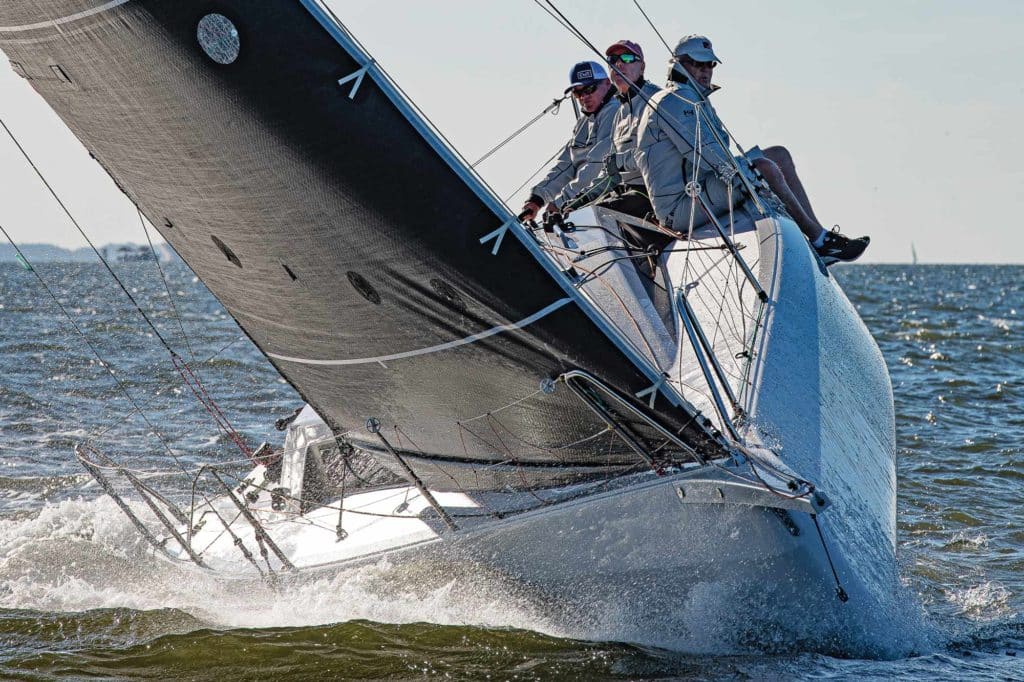
Powlison’s first impression at the dock was that the boat would be challenging to manage, but “once we went sailing, it all was logical. Yes, there’s a lot of line management, but once you’re disciplined to do that, the boat is much easier to sail than it looks.”
With the trio of judges and the owner piled on board during the test sail, it was immediately obvious that two is company and three is definitely a crowd. “It’s also not the type of boat where you’ll want to spontaneously invite an inexperienced crew [to go race],” Powlison says. “You will really need to know what you’re doing, but once you do get comfortable with everything, it will be a really easy boat to sail well.”
Ben Corson, the Annapolis-based owner of our test boat, had spent the better part of a year racing with his female partner and tinkering with the boat, and consequently, the boat is meticulously prepared, race-ready and offshore-compliant. There’s no mistaking what’s what and where—labels pasted throughout the boat identify halyards, sail and ballast controls, safety gear and even the electronics manuals.
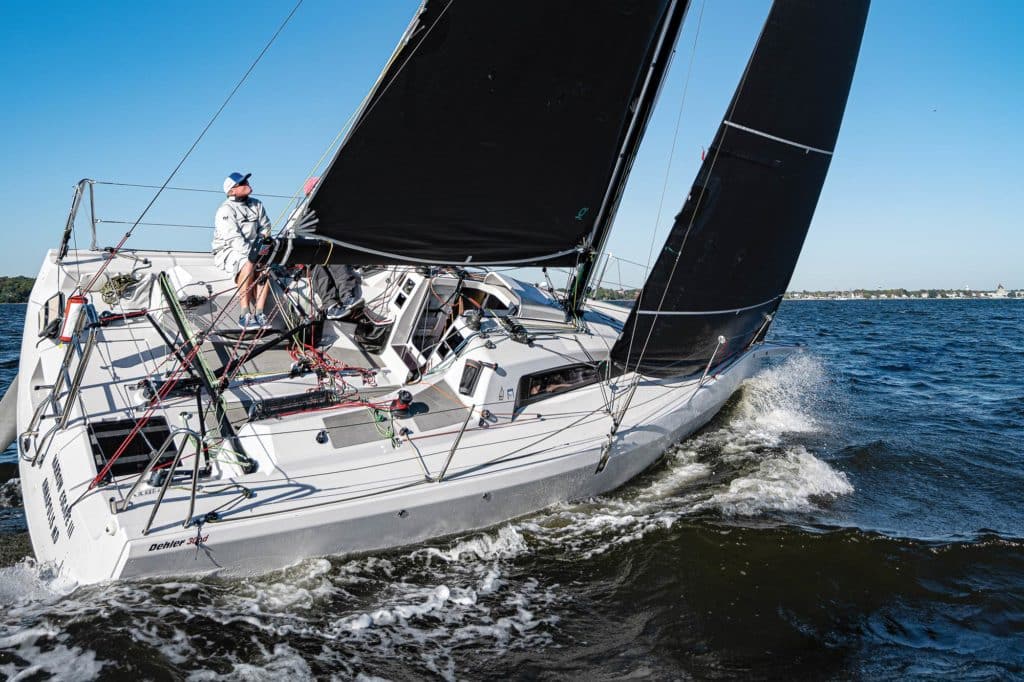
As a tightly controlled one-design class with ratified rules, owners like Corson can’t do much to the boat as it is, but there’s not much—if anything—an owner would need to change anyway. Everything on the boat, the judges agreed, works as it should. Adjustable backstays, for example, lead forward to clutches mounted on the cockpit wall, which allows the backstays to be kept taut or released without having to worry about loading to a winch during a maneuver. With the turn of a locking nut on the tiller arm, the steering system can be adjusted to change rudder toe-in on either side. The traveler track runs nearly the full width of the wide transom, opening up a wide range of adjustability for the 361-square-foot mainsail, and as a bonus, small removable reaching struts open up headsail sheeting angles. Stainless-steel foot braces are easy to deploy and stow, and allow the skipper to lock into a comfortable position over the angled coaming, with great visibility over the bow.
When the boat is powered up and leaning on the chine, Allen says, the sensation is exceptional: “This delivered the best sailing experience of all of the boats we tested. It was easy to tack and jibe, it tracked great, it’s easy to get to the sail controls, and we had no problems whatsoever with wiping out—and we tried hard a few times.”
With Allen on the tiller and Powlison managing the sheets as they started upwind into a 15-knot breeze, Stewart hit the chamfered rail. “My first impression from the rail was how high I was and how it was charging upwind—like a big boat. I couldn’t feel the chop, I didn’t get wet, it didn’t skid out at all. I was also amazed at how solid it felt; there wasn’t one bit of pounding, creaking or anything.”
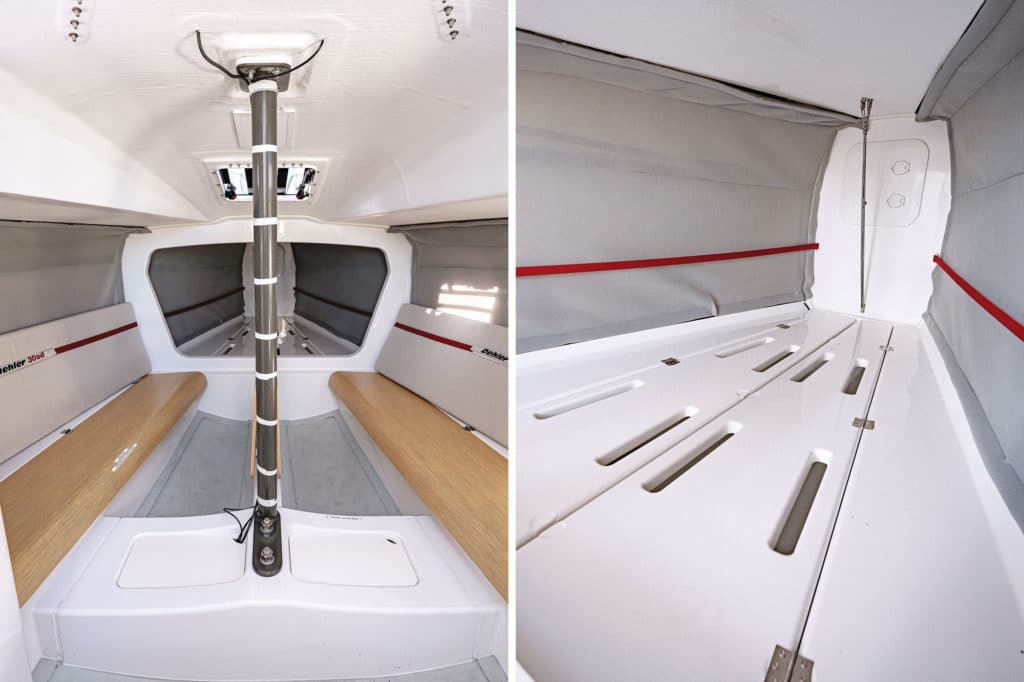
Eventually, Stewart came off the rail and they filled the ballast tank instead—to the equivalent of 400-plus pounds of rail meat. Allen says the gravity-fed water-ballast system took about five minutes to top off, roughly 30 seconds to transfer during a tack, and less than a minute to drain.
“Once we added the water ballast, the boat just powered forward,” Powlison says. “You can really feel the difference when the boat sits on the chine and just tracks straight ahead.”
Impressed as they were with the Dehler 30’s upwind pace, when they set the big red A2 spinnaker (1,076 square feet) and took off down the bay, they had no doubts about the boat’s downwind potential. They only used three of the five class-sail inventory on board, which includes an A2, an A5, a spinnaker staysail and a Code Zero, and if they had more time and distance, they would have certainly piled on more sail area.
“I could see going with the A5, the J3 and the staysail, and maybe a reefed main in a big breeze,” Allen says. “That would be fun—and wicked fast.”
Lightweight and strong is, of course, the holy grail of every race boat, and here too Dehler delivers with what the judges say is an immaculate cored-hull laminate and good detail in the finish work throughout the boat. Dehler was also keen to leave out extraneous weight from the interior to get the boat to weigh in at just over 6,000 pounds. Without any floorboards (there’s thin foam padding glued to the inner hull skin instead), they’re able to get 6 feet of standing headroom at the companionway (which has a sliding hatch hood on rails) and plenty of sitting headroom forward of the mast and into the V-berth.
To achieve a higher level of the camper-sailor experience, comfortable V-berth cushions and removable mesh hull liners are standard, as is a folding centerline table, rounded wooden bench seats, and backrests that double as pipe berths. With storage cubbies scattered about the boat, a marine toilet with a graywater tank, a two-burner stove and two quarter berths, this little race rocket is definitely a legit weekender too. Lithium-ion batteries and a 9.9 diesel with a retractable Stealth Drive shaft that pulls up flush with the hull will get you where you need to go and keep the electronics suite powered up just fine.
The Dehler 30 was a strong contender for Boat of the Year, but the judges couldn’t dismiss the boat’s biggest limitation: It will get hammered by most rating systems, which makes it a one-trick one-design offshore-racing pony. It is, however, an outstanding design for keen shorthanded sailors looking for a race-ready platform for just over $240,000. If—or when—international class racing ever becomes a real thing, the offshore sailing world will be a better place.

